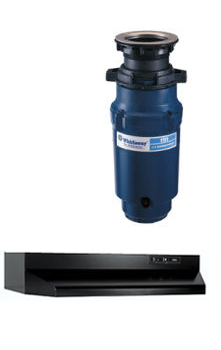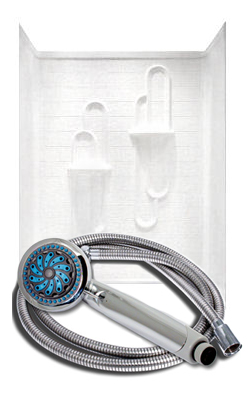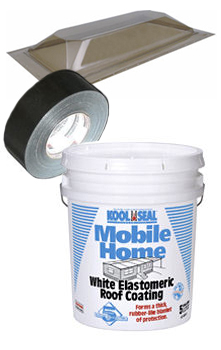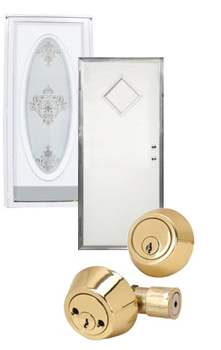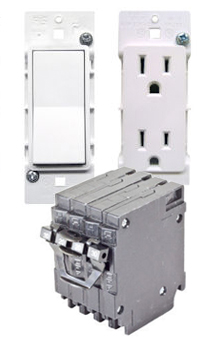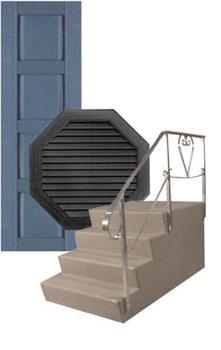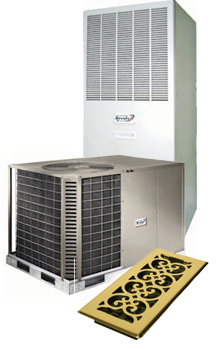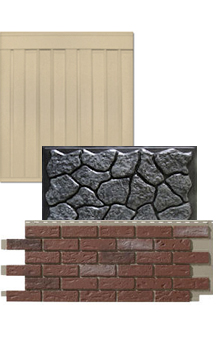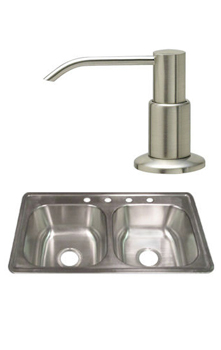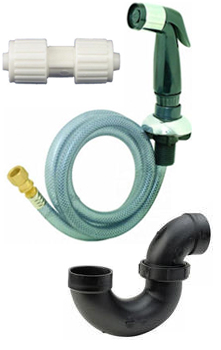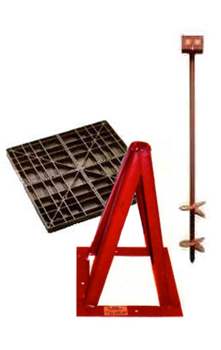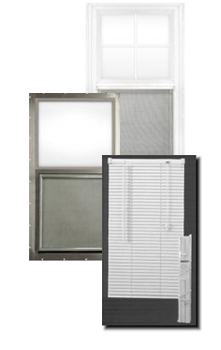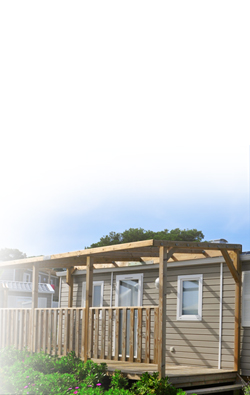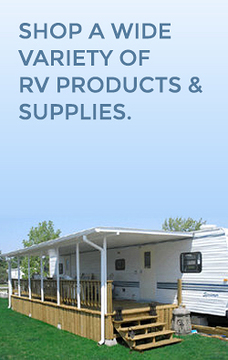The introduction of refrigerators into RVs was a game-changer. Fridges made RVers feel less like they were camping and more like they were in a mobile home, allowing people to travel farther and longer by cooking in their kitchens. But, much like other parts of RV ownership, the refrigerator requires essential maintenance. So follow our handy guide to keep this vital appliance running at peak performance.
RV Refrigerator Types
 You’ll see either compressor-driven or absorption when it comes to RV refrigerators. However, it is crucial to remember that some RVers and RV manufacturers may use the term residential refrigerator to refer to a compressor-driven or absorption fridge. Unfortunately, this term can be confusing as some refer to the fridge’s design. In contrast, others reference refrigerators for fixed residences, also known as “residential-style.” With that in mind, let’s look at the two main types of refrigerators.
You’ll see either compressor-driven or absorption when it comes to RV refrigerators. However, it is crucial to remember that some RVers and RV manufacturers may use the term residential refrigerator to refer to a compressor-driven or absorption fridge. Unfortunately, this term can be confusing as some refer to the fridge’s design. In contrast, others reference refrigerators for fixed residences, also known as “residential-style.” With that in mind, let’s look at the two main types of refrigerators.
Compressor Refrigerator
An RV compressor-driven fridge is powered by AC/DC power, meaning it can run off of shore power or your coach batteries. As a result, they tend to cool faster and more efficiently than absorption fridges and are not affected by altitude.
Residential refrigerators, similar to those used in traditional fixed homes, are also compressor refrigerators. However, these fridges can only run when plugged into the wall or AC power to run. Therefore, they will require an inverter when not connected to shore power.
Residential-Style Refrigerators
“Residential-style” refrigerators can be found in large towables and Class As. They are popular for their large capacity and ability to cool evenly. They are also generally less expensive than a typical RV refrigerator.
A “residential-style” fridge can only work on shore power. However, they can continue to function off of shore power through a generator or an inverter. An inverter will convert DC power from your RV’s DC power into AC power.
Absorption Refrigerator
The most common type of refrigerator for Rvs, however, is the absorption refrigerator. Absorption refrigerators can use multiple power methods, primarily LP gas. They are more flexible than compressor-driven refrigerators, with the ability to switch between LP gas( propane) and either AC power (shore power) or sometimes DC power (shore power).
A “2-way fridge” usually refers to an absorption RV that can run on both AC power (shore power) and LP gas (propane). On the other hand, a “3-way fridge” can run off of AC power (shore power), LP gas (propane), and AC power (shore power). Switching to propane can help you stay out longer without the need for shore power.
However, as a trade-off for their flexibility, they generally do not cool as quickly, evenly, or efficiently as compressor-driven refrigerators.
RV Refrigerator Maintenance
 Consult the owner’s manual
Consult the owner’s manual
When you begin RVing, purchase a new fridge, or are feeling a little rusty, it is crucial to read your owner’s manual. One significant difference between your fridge at home and the fridge in your RV is that it runs on propane. For beginners, this can prove to be a little confusing at first. However, there are essential refrigerator components inside and outside your RV, so take your time to ensure you know where and what everything is.
Inspect the Fridge Regularly
Performing visual inspections of all the working fridge components is vital to RV ownership. As stated above, parts are accessed from both inside and outside the RV and will require inspection regularly.
Inside the fridge and freezer, you can inspect the evaporator fins, ice maker, gaskets, and light. It’s also a good idea to place a thermometer towards the back of your fridge to manually monitor the temperature. Freezers can occasionally create an ice build-up, so be sure to defrost the freezer if this occurs.
On the outside of the fridge, ensure the hinges and latches are still secure and check the display to ensure its functioning. If this seems overkill, remember that your refrigerator is bouncing down the road in your RV, and things can come loose.
An ammonia smell is a red flag. It’s a sign that something is leaking, so turn off the fridge and open it up to air it out. Open up windows and vents to air out the camper as well. Ammonia fumes can be dangerous, so this is not a situation to take lightly.
Inspect Fridge Exterior Connection
Outside of the RV, a panel should be located right behind the fridge on the rig’s body. Behind it, there are condenser coils, propane components, connections, and vents that can become soiled, clogged, or loose. Bring a can of compressed air with you to dust off these pieces. If your freezer has an ice maker, you can also check the water line connections to ensure it’s not leaking.
For some RVs, the fridge exhaust vent is located on the roof, which can become clogged with leaves and debris, causing the unit to work inefficiently or not at all. Again, check your owner’s manual to confirm the locations of everything.
Check for a Tight Seal
The refrigerator needs to have a good seal around the door for it to operate correctly. If there are gaps or leaks, warm, humid air will enter the refrigerator and cause insufficient cooling, condensation, and frost build-up. Also, placing heavy items on the door shelves like milk, large water bottles, and other items puts weight on the door and, with the extremes of traveling down the road, causes the door to sag and the gasket to not align.
Open the door slightly and place a dollar bill or piece of paper between the door and the refrigerator frame, shut the door, and slightly tug on the bill. If it slides out effortlessly, it is not sealing well. It should have a slight resistance for a good solid seal. Do this on all four sides of the door.
Run the Fridge Beforehand
This step is only necessary if you take your RV out of storage or haven’t used it in a while. It is imperative to ensure that your fridge is sitting at the correct holding temperature (between 33-41 degrees F) before loading it with food. While this will depend on the type of refrigerator your RV has, it is recommended to let the fridge run for at least 12 hours before filling it with food. Cool your food in your home’s fridge before loading it into your RV’s fridge.
Cleaning
It’s not uncommon for mold or mildew to grow inside a refrigerator during storage. It is an excellent time to clean everything inside with a mild cleaner such as dish soap and water. Rinse it with baking soda and water and dry it thoroughly. Replace your charcoal pack monthly to reduce odor and keep your fridge airator working efficiently.
Check The Thermistor
The thermistor is a temperature sensor typically clipped to the coils inside the refrigerator. Moving it up or down will increase or decrease the temperature as the warm air will be higher in the refrigerator box. As condensation forms in the refrigerator, rust can form on the thermistor. A good visual inspection is recommended to reduce condensation and ensure this is not getting corroded.
RV Refrigerator Tips
Filling the RV fridge
Overpacking your fridge can cost you money if your fridge can’t keep the food cold enough. It’s crucial to allow air to circulate between the food. Try removing excess packaging or transferring food to stackable containers to conserve space. If the fridge is too full, it will not be able to stay cool enough.

Keep the Fridge Shut
Frequently opening and closing the doors of your fridge and freezer can allow excess moisture and heat to enter, causing your fridge to work harder to stay cool. In addition, moisture can lead to ice build-up. Keep the doors shut as much as possible to avoid excess condensation in the fridge.
Defrost Ice Build Up
As we discussed above, your freezer can occasionally have a build-up of ice on it. If this happens, you must defrost it immediately. If your fridge’s evaporator fins have a build-up of ice, defrost them, and turn down the temperature. While you want the food in your fridge to stay cold enough, you don’t want it to be frozen.
Park in the Shade
Position your RV, so your fridge’s outdoor components remain shaded to reduce the amount of work and strain on your refrigerator. As a result, your food will stay cooler, and your fridge will last longer.
Keep the RV Level
Leveling your RV is not only more comfortable for you, but it’s essential for the longevity of your fridge. If your RV is too unlevel, this can damage your fridge because of the propane flame position. This is also unsafe for your other propane appliances and plumbing, so keeping your RV level is essential. Therefore, if you need help leveling your RV, we suggest trying Camco RV Super Wheel Chock to keep everything in your RV running safely.
Install a 12-volt fan.
Sometimes installing a small fan to help draft the warm air away from the fridge can do wonders. They can be purchased online and installed by you or an RV dealership. Note: This is not the same fan that helps circulate air inside the fridge.
Closing
RVing is fun and exciting but also comes with a handful of responsibilities. Ensuring you treat your appliances correctly and maintain them can make or break your vacation. Your refrigerator is one of the most essential appliances. If you take care of your fridge, it will take care of you!
Tags: RV, RV fridge, RV life, rv parts store, RV refrigerator


